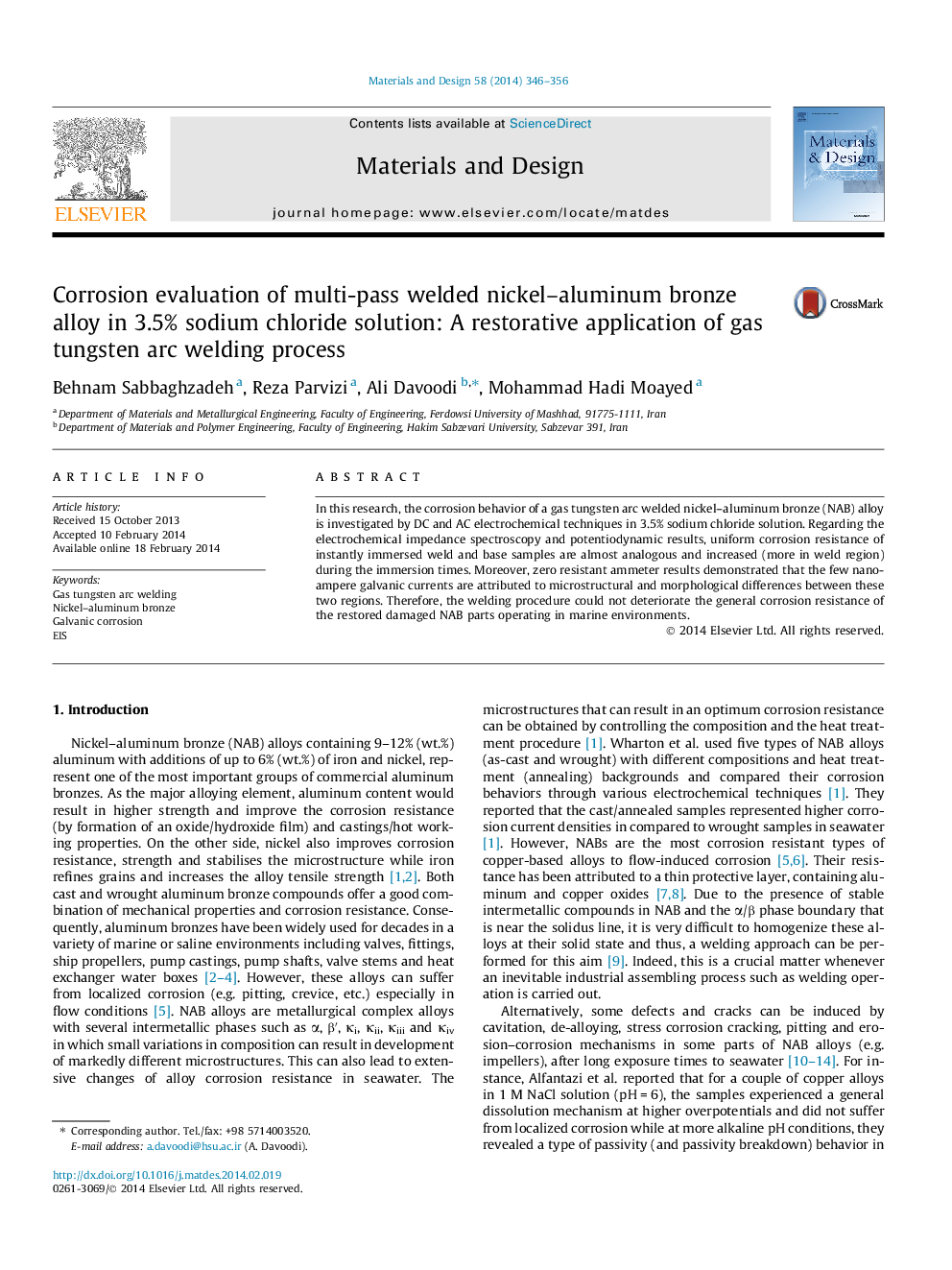| Article ID | Journal | Published Year | Pages | File Type |
|---|---|---|---|---|
| 829286 | Materials & Design (1980-2015) | 2014 | 11 Pages |
•Corrosion of GTA welded nickel–aluminum bronze (C95800) was studied.•Drastic microstructural changes occurred during the welding operations.•The β′ and α phases acts as anode and cathode, correspondingly, in weld region.•A few nanoamperes couple current was measured in ZRA test as galvanic corrosion.•Corrosion resistance of weld parts could not be weakened in marine environments.
In this research, the corrosion behavior of a gas tungsten arc welded nickel–aluminum bronze (NAB) alloy is investigated by DC and AC electrochemical techniques in 3.5% sodium chloride solution. Regarding the electrochemical impedance spectroscopy and potentiodynamic results, uniform corrosion resistance of instantly immersed weld and base samples are almost analogous and increased (more in weld region) during the immersion times. Moreover, zero resistant ammeter results demonstrated that the few nanoampere galvanic currents are attributed to microstructural and morphological differences between these two regions. Therefore, the welding procedure could not deteriorate the general corrosion resistance of the restored damaged NAB parts operating in marine environments.
